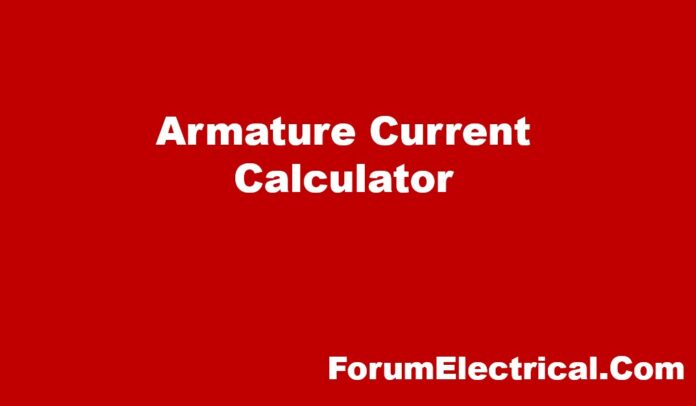In the field of electrical engineering, armature current is an essential concern, particularly when it comes to working with
- Electric Motors and
- Generators
specifically.
What is an Armature?
An armature is a power-generating component of an electric machine that may be a spinning or stationary section of the machine.
The armature may interact with the magnetic flux in the gap of air, and the field element can contain any stable magnets or electromagnets fashioned with a conducting coil like another armature, which is known as the doubly-fed electric machine.
The armature always functions as a conductor, sloping normal to both the field and the motion direction, torque or force.
What is the Armature Current?
When it comes to electric machines, the component that is responsible for carrying alternating current is known as the armature current.
For this reason, the first step in determining the relationship between armature current & current is to make use of the relationship between torque and speed.
Necessity of the Armature Current
Following that, take into consideration the connection between torque & armature current.
The current that is flowing through the armature winding of a machine is represented by this voltage, which is an essential factor in determining how well the machine performs under a variety of various operating conditions.
When it comes to examining the efficiency, torque, & speed of electric motors, as well as the voltage that is generated in generators, having a solid understanding of armature current is absolutely necessary.
What is the Armature Current of a Generator?
The armature current is the current that flows through the machine’s armature winding, which is the revolving component that turns mechanical energy into electrical energy in a generator (or) electrical energy into mechanical energy in a motor.
How does an Armature generate Current?
The engine spins a shaft, which turns an electromagnet (armature). The revolving armature rotates within a stationary magnetic field (stator), generating electrical current via copper wiring.
Armature Current Formula
The calculation of armature current, denoted as Ia(A) in amperes, involves dividing the difference between the applied voltage, denoted as V(V) in volts, and the electromotive force, denoted as E(V) in volts, by the armature resistance, that is Ra(Ω) in ohms.
Ia (A) = V (V) – E (V) / Ra (Ω)
Where
Ia (A) represents the armature current.
V (V) represents voltage in volts, V.
E (V) represents electromotive force in volts (or) V.
Ra (Ω) represents armature resistance in ohms (Ω).
The armature current, denoted by A, is equal to Ia (A).
Solved Example
Calculate the armature current for a motor with 240 volts applied voltage, 220 volts back emf, and 0.5 ohms armature resistance
Given
V (V) = 240 V
E (V) = 220 V
Ra (Ω) = 0.5 Ω
Formula
Armature Current
Ia (A) = V (V) – E (V) / Ra (Ω)
Solution
Ia (A) = 240 – 220 / 0.5
Ia (A) = 20 / 0.5
Ia (A) = 40A
Click here for more Electrical Calculators









